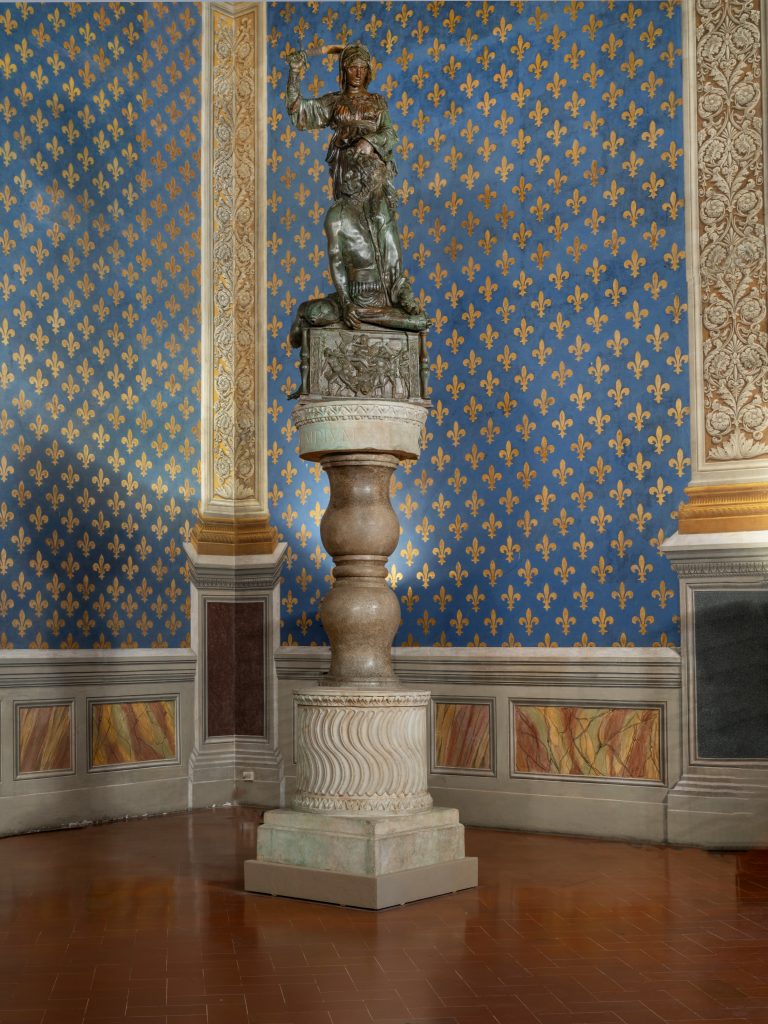Donatello’s Judith and Holofernes has been returned to the Sala dei Gigli in the Palazzo Vecchio after ten months of restorative work.

With the sponsorship of US non-profit Friends of Florence, the bronze has undergone two phases of restoration to remove layers of dust that have accumulated since it was last cleaned in 2004 as well as applying new technologies to conserve the metal that have developed since the previous restoration in the 1980s.
The first phase of the operation involved an in-depth analysis of the material to assess its condition and decipher the conservation methods used by the Opificio delle Pietre Dure almost 40 years ago. The findings revealed a need for a more complex approach to renew the restorative effects of the previous work, whilst also removing the products of slow corrosion processes on the metal’s surface. The recent work has benefitted from improved understanding of the material, as well as new laser-based technology to treat the metal without the disadvantages of mechanical or chemical cleaning techniques used in the past. This work has also revealed localized areas of gilding on the bronze, which provides important information for how this statue (and others like it) can be more effectively protected in the future.
Piero de’ Medici commissioned Donatello to shape the bronze in 1457, who completed the work in the early 1460s. A biblical story of the triumph of courage over tyranny, Judith’s victory over Holofernes came to reflect broader political themes, specifically the effort to defend the Florentine Republic. This was later reinterpreted as a symbol of Florence’s freedom when the Medici family was exiled in 1495 and the statue was confiscated from them and brought to the seat of civic power. It occupied the place later taken by Michelangelo’s David as a similar reminder of the courage with which Florence has always associated itself.

Over the previous 500 years, the statue has circulated between several high-profile positions, including the Loggia della Signoria, the Arengario along the front of the Palazzo Vecchio and finally the Sala dei Gigli, to which it has now been returned. Donatello’s version of the biblical story was the first of its kind to depict Judith in the act of beheading Holofernes, while others chose to show the moment in which she held up the general’s severed head. As such, this version is the first large-scale version in which Holofernes’ entire figure is included and continues to be celebrated as one of Donatello’s finest works.











